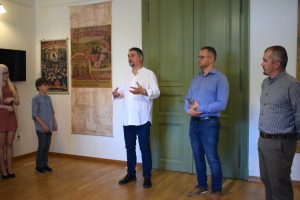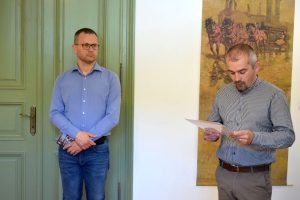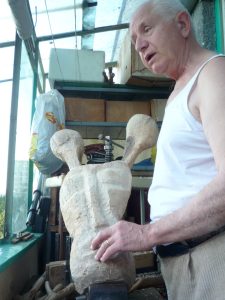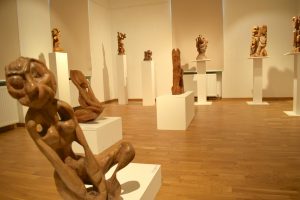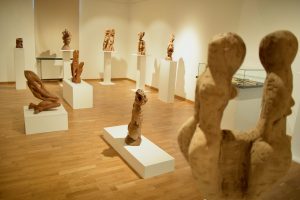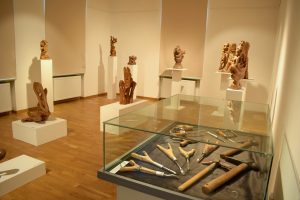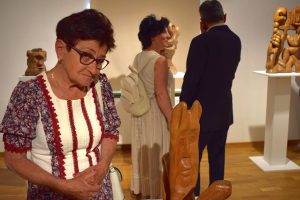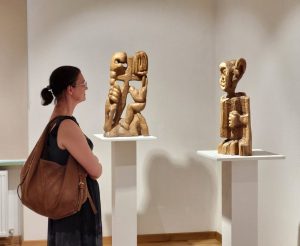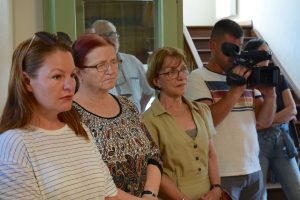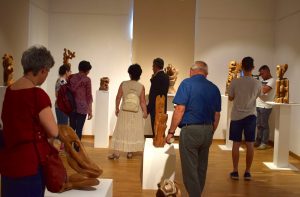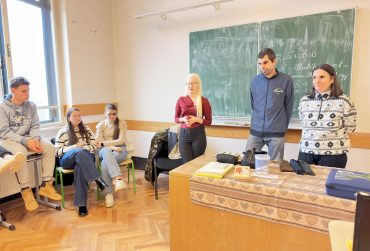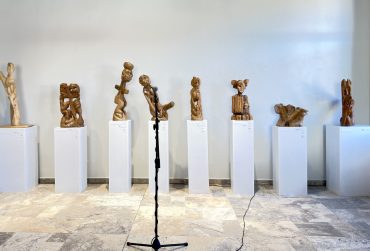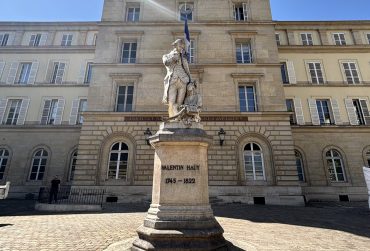On 8 June, a temporary exhibition of Lajos Katona’s original and innovative sculptures opened at the Haáz Rezső Museum in Odorheiu Secuiesc. The exhibition will be open for two months. The exhibition, initiated by the Foundation for the Visually Impaired Hungarians in Transylvania, was opened by sculptor Imre Berze, and the event was enhanced by the performance of Ákos Endes Ábrahám, a multiple award-winning blind poet teller and the visually impaired Csengelle Nagy. The event was hosted by Zoltán Miklós, director of the Museum.
At the age of nine, Lajos Katona lost his right arm and one eye in an explosion accident, which left him completely blind by the age of 18. He completed his high school, then studied philosophy, pedagogy and history at the Babes-Bolyai University. From 1968 to 2003, he teached at the High School for the Visually Impaired in Cluj-Napoca, including geometry for pupils in grades V to VIII.
Over a period of thirty-three years, from 1975 to 2011, he made more than thirty sculptures, some of which can be seen at the exhibition in Odorheiu Secuiesc.
One might think that he intended his sculptures primarily for the blind and visually impaired. This is not the case. “Many people think, my sculptures are for the visually impaired. I always explain that this is not the case. I am interested in how my work is seen and perceived by sighted people. The analysis can only be complete if someone also examines and describes what the sculptures look like based on visual perception.” (Lajos Katona, Blind Sculptor?! Székelyföld, Volume XIII, Issue 4, 2009.)
Asked how he overcame the circumstances – he was not only totally blind but also missing his right hand – he replied that “you can create in any circumstance”.
Lajos Katona sees his work as a kind of experiment: ‘These works were made with the aim of trying out a phenomenon in special education. I was guided in my work by the question of what forms can be produced by using only tactile perception, excluding vision – to use this technical term – how to achieve visually interpretable forms. I work slowly, so my work is very slow. I choose a large raw material – at least lately – I try to realise the original, initial idea, the forms evolve as I go, but the raw material itself gives me an idea and I work with the wood for quite a long time until the system of forms is created. You can see in the forms that there are recognisable form motifs, but there is a lot of spontaneous structure.
In many cases, the wood gives an idea. I usually carve the wood in a way that respects its structure. I carve along the grain. I incorporate elements into the shapes that are specifically recognizable details. These are parts of the human body, or the human as a whole. Because this form is completely accessible to me. The idea that man is the most important form is also significant. This is of interest to everyone.”
“It was intuition and a kind of inner motivation that made me create,” he says in one of his books. His sculptures have a strong impact, radiating strength and humility, philosophical questioning, harmony and love. The works of this blind artist, who can see with his hands, are admirable, his inner vision, inexplicable to many of us, his strong attachment to his visions (some sculptures take years to complete), his willingness to learn and change, his perseverance, his creativity are inimitable. In the words of the sculptor Imre Berze, he has given us a visual gift, his sculptures are “autonomous messages carved out of personal impulse”.
Thank you to the Katona family for the bequest, thank you to the Haáz Rezső Museum for hosting the works for two months, autonomous messages carved out of personal impulse. Thank you to the Museum staff for their meticulousness and professionalism, for presenting the sculptures in a worthy manner. We thank Blanka Pál and Balázs Gagyi for their help, without them this exhibition would not have been possible.
We recommend this unique exhibition to everyone, as it really is a visual gift!

